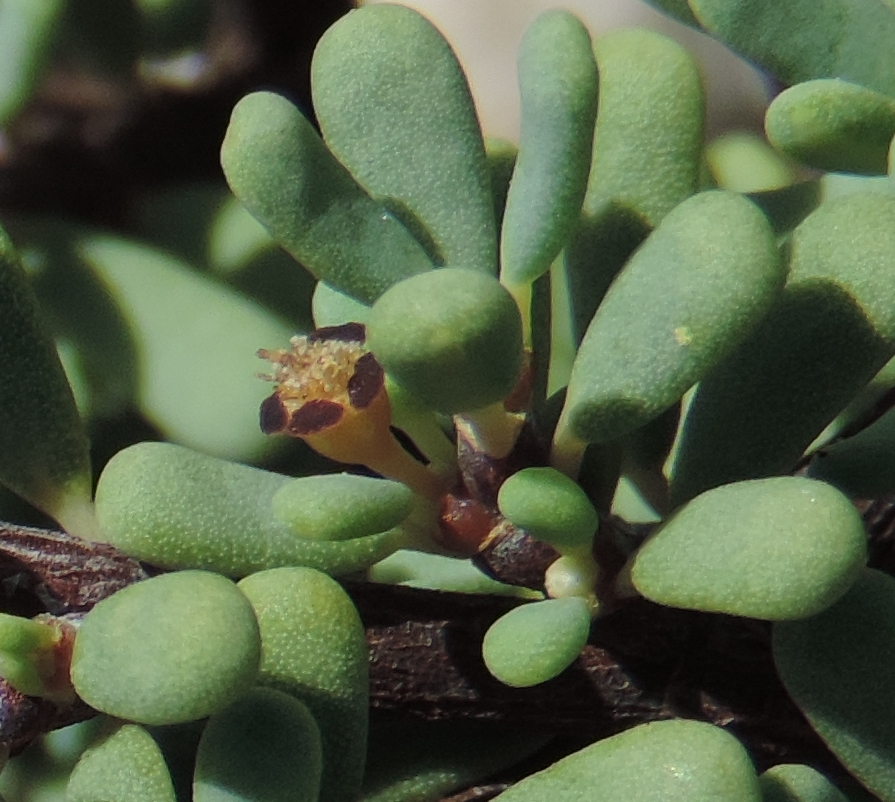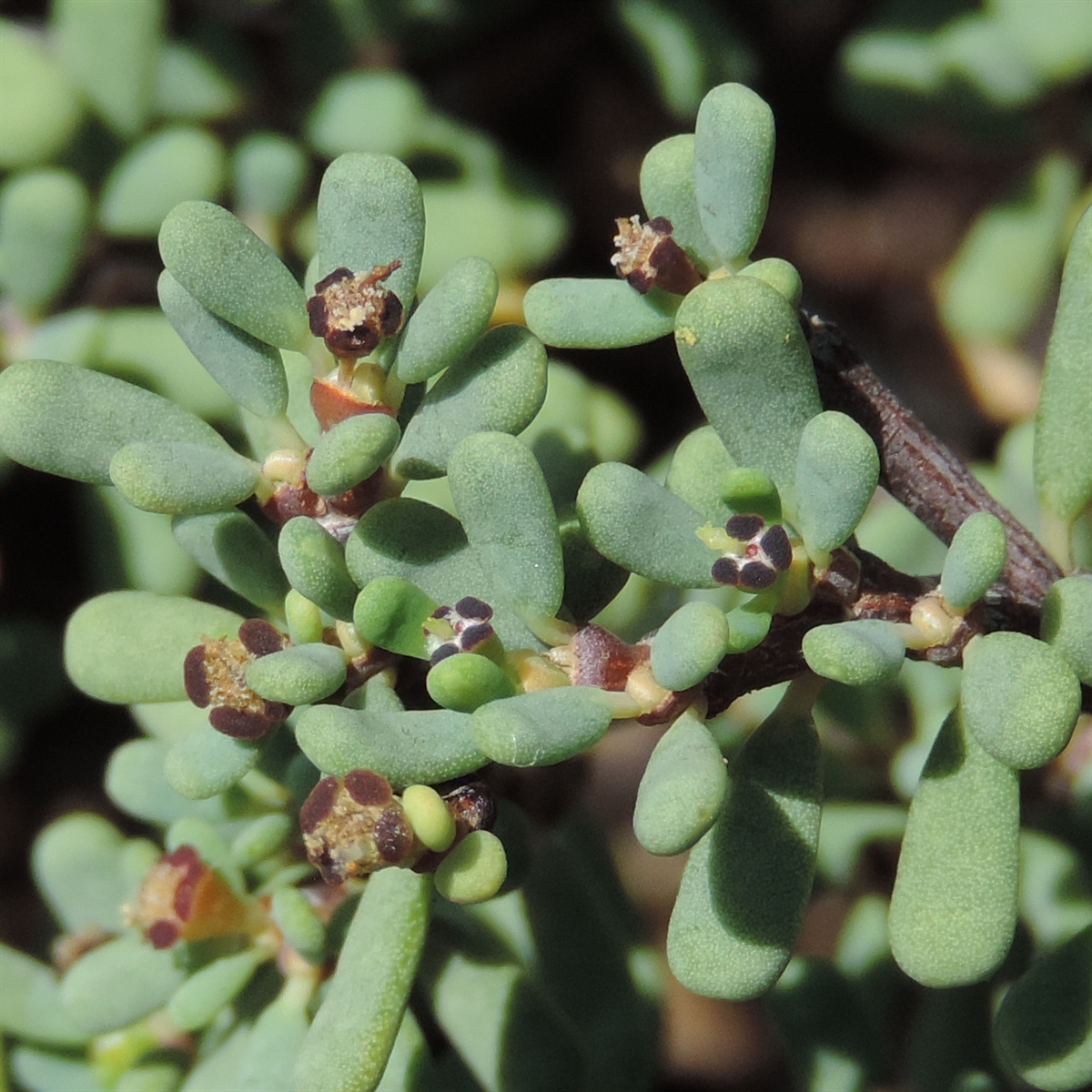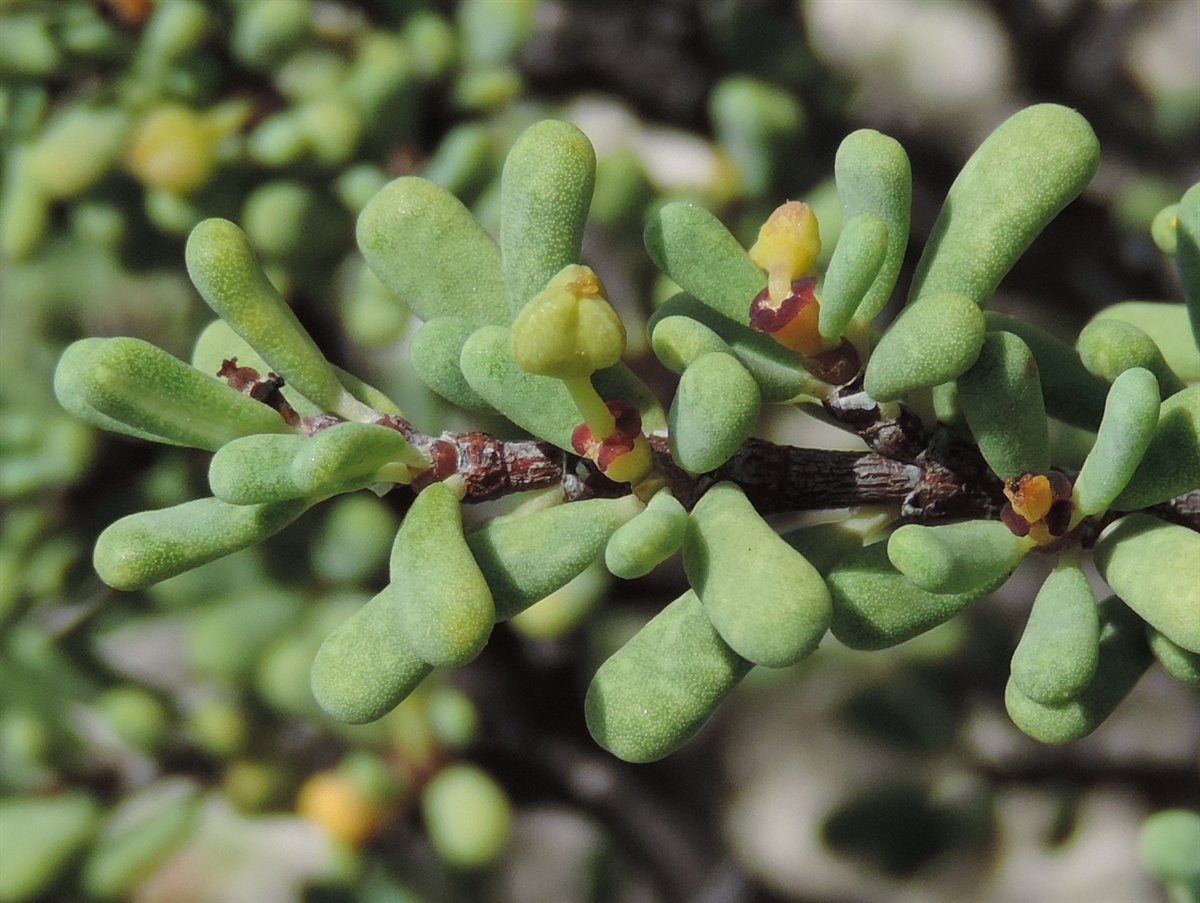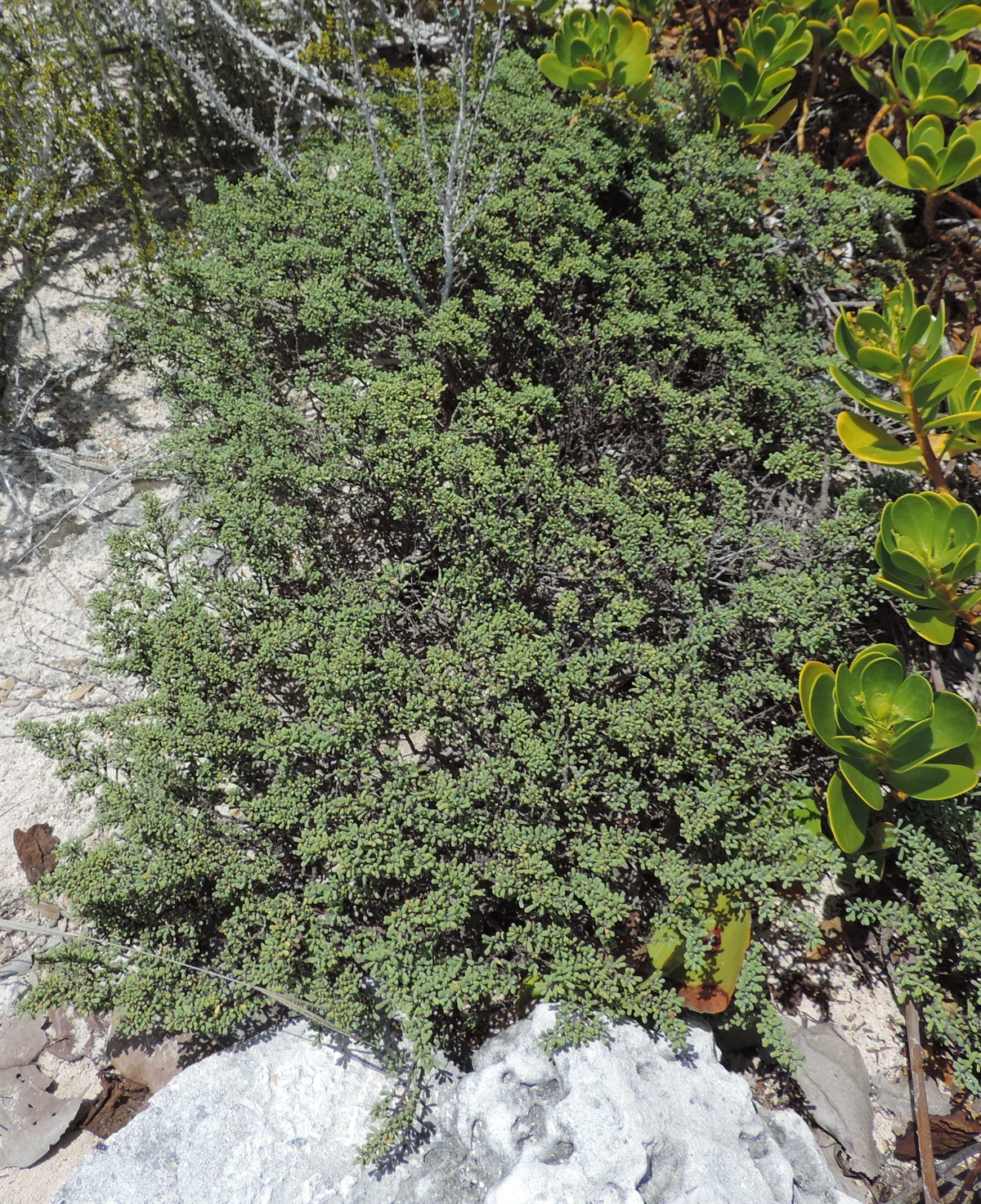Habit: Euphorbia longinsulicola grows as compact, semi-succulent, glabrous shrub to 1 meter in height (typically shorter). The succulent silver-grey leaves are arranged oppositely, elongate, to 0.5 cm in length with a rounded leaf apex and no real leaf margin. At the base of the petiole are short lived ciliate stipules. The vegetation produces a thick, milky sap.
The incomplete, imperfect, monoecious, actinomorphic, flowers are arranged in cyathia and occur in the axils of leaves. There are 5 dark brown/red, deltoid glands on the edge of the cyathia. There is no calyx or corolla. Staminate flowers are reduced to a single stamen. Carpellate flowers are reduced to a single superior carpel, each with 3 locules and numerous seeds. The fruit is a capsule at maturity that splits along 3 suture lines.
Habitat: Euphorbia longinsulicola grows on dunes and early Holocene rocky outcroppings.
Distribution: Euphorbia longinsulicola is a single island endemic occurring on a narrow section of Long Island coastline on the Atlantic side.
Medicinal/Cultural/Economic usage: Euphorbia longinsulicola is not used medicinally in the Lucayan Archipelago.
All parts of the species are extremely toxic and should not be ingested!!



